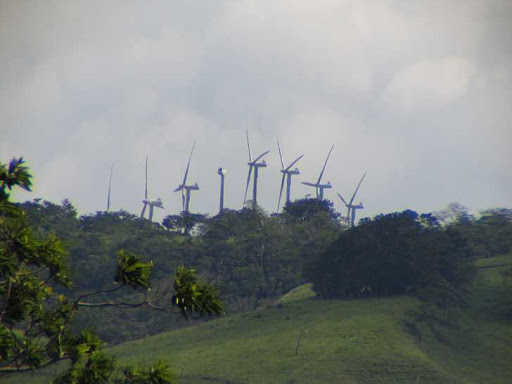Costa Rica is ramping up its renewable energy game, and the Instituto Costarricense de Electricidad (ICE) is leading the charge. In a significant move, ICE has signed letters of commitment with private-sector companies to secure 166 megawatts (MW) of solar and wind energy. This ambitious step is part of the country’s ongoing efforts to meet growing electricity demands while staying true to its environmental goals.
With five new solar farms and four wind farms scheduled to start operations between 2026 and 2027, Costa Rica is setting the stage for a greener future. This is particularly important as the country looks to strengthen its energy resilience, especially in light of the El Niño phenomenon, which often brings droughts that can affect hydropower resources.
The Solar and Wind Projects in the Pipeline
Let’s break it down. The new solar projects that ICE has lined up include Numu, Los Tecales, Colorado, Los Mangos, and Las Canas. These farms are all set to be built in the northwestern province of Guanacaste, an area known for its vast open spaces and sunny weather—perfect for solar energy.
On the wind side of things, Costa Rica will soon see the construction of Las Pavas, La Montosa, San Jorge, and Movasa II, also in Guanacaste. This region is a hot spot for renewable energy projects, thanks to its favorable wind conditions and geographical advantages.
All these projects were selected during a tender process earlier this year. While the letters of commitment have been signed, the developers are still awaiting final approvals, including environmental feasibility declarations, concessions for public generation services, and connection contracts with ICE before construction can officially kick off.
A Smart Move for the Future
Why is this such a big deal? Well, for one, Costa Rica already leads the world in clean energy generation. But, as the saying goes, you can never have too much of a good thing. These new solar and wind farms will help ICE and the country not only meet its growing energy needs but also prepare for the increasing variability that comes with relying more on renewable sources.
Renewables like wind and solar are great, but they come with a catch—they’re not always predictable. The wind doesn’t always blow, and the sun doesn’t always shine. To balance this out, ICE plans to continue adding geothermal and hydroelectric plants to its energy mix, providing a stable backbone of energy production that can fill in the gaps when the wind and sun aren’t cooperating.
Private Sector Joins the Green Revolution
One of the standout features of this initiative is the involvement of the private sector. In a country where much of the energy sector has been state-driven, ICE’s partnership with private companies marks a significant step toward greater collaboration. These private-sector projects will work alongside ICE’s own developments, such as the Tejona wind farm in Tilarán, which is currently being repowered, and the new San Antonio solar plant in La Uruca.
ICE’s Electricity Manager, Verny Rojas, summed it up well when he said, “We are pleased to announce the progress of these clean generation projects by the private sector. They will join the repowering of Tejona and our new San Antonio solar plant. We will have greater provisions for phenomena such as El Niño.”
The addition of private-sector-driven renewable energy projects gives Costa Rica more flexibility and capacity to ensure a consistent electricity supply, especially during tough weather conditions like droughts caused by El Niño. And, of course, it’s always a win when you can expand renewable energy while creating jobs and boosting the economy at the same time.
What’s Next?
Costa Rica’s commitment to renewable energy has always been a model for the world, and these new developments are no exception. The country is already known for generating nearly all of its electricity from clean sources, and the future is looking even greener. By 2026, when these new solar and wind farms come online, Costa Rica will be even better positioned to handle whatever challenges climate change throws its way.
But before we get too ahead of ourselves, there’s still plenty of work to be done. These projects need to pass all the necessary regulatory hurdles, and the infrastructure to support them needs to be in place. ICE is pushing ahead, but like any large-scale development, patience and persistence are key.
Still, the progress is promising. With 166 MW of new renewable energy in the pipeline, Costa Rica is setting an example that the rest of the world would do well to follow.
Why Guanacaste?
You might be wondering why so many of these projects are concentrated in Guanacaste. The answer is pretty straightforward—Guanacaste’s climate is ideal for renewable energy. With plenty of sunshine for solar and consistent winds for wind turbines, the province is a natural fit for large-scale energy projects. Plus, the relatively flat terrain makes it easier to set up these massive energy farms compared to other more mountainous regions in Costa Rica.
The province’s strong focus on tourism and agriculture also means that Guanacaste has the infrastructure and workforce needed to support these developments. With more renewable energy projects on the horizon, Guanacaste’s economy stands to benefit significantly from these investments.
A Model for the World
At a time when many countries are struggling to transition to clean energy, Costa Rica continues to show that it’s possible to generate nearly all of a nation’s power from renewable sources. And it’s not just about energy—it’s about building a sustainable future that benefits both people and the planet. With the support of both public and private sectors, Costa Rica is well on its way to proving that clean energy isn’t just a dream—it’s the future.
So, the next time you hear about Costa Rica’s renewable energy achievements, remember that these projects aren’t just about keeping the lights on. They’re about setting a global standard for sustainability, innovation, and forward-thinking.

